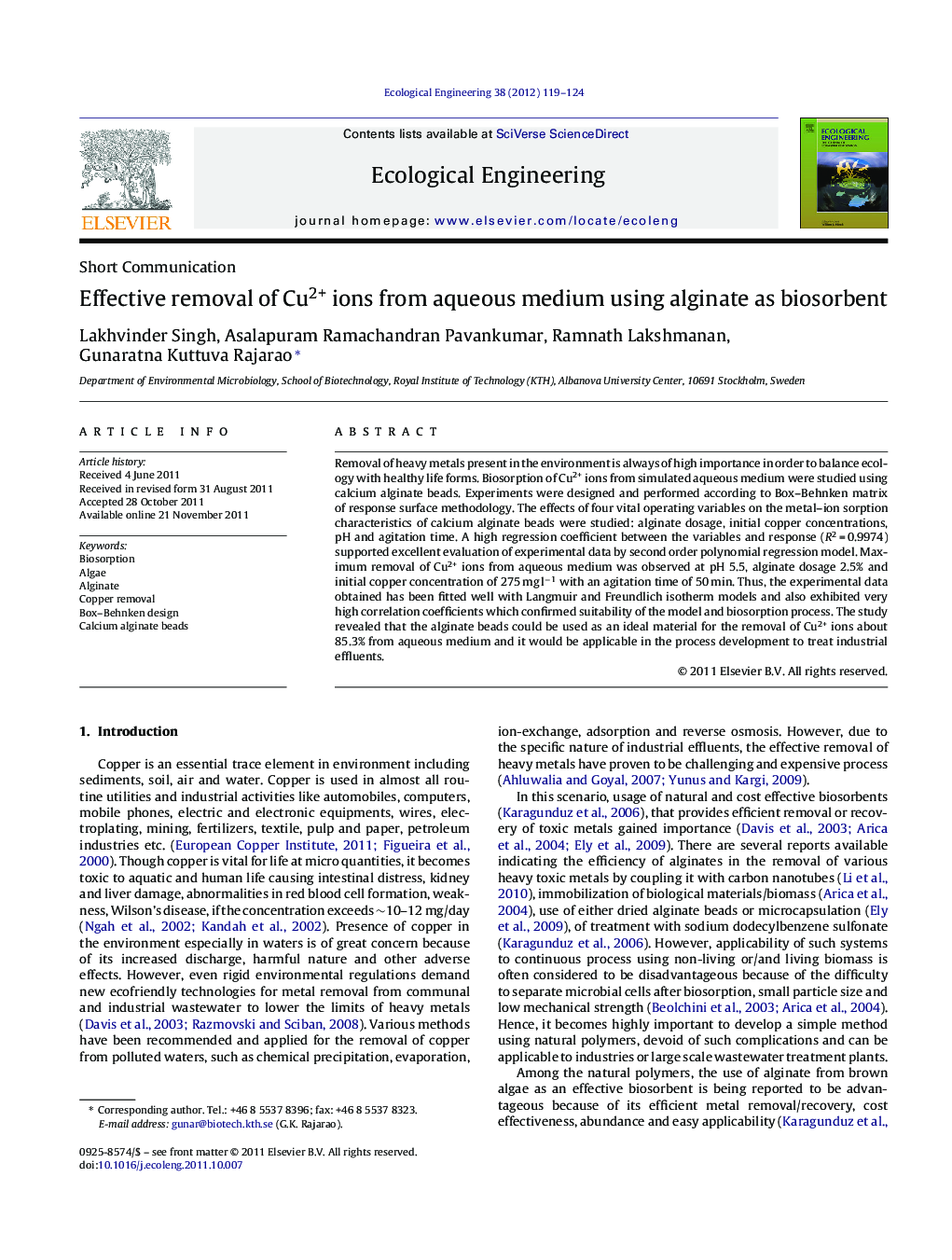| Article ID | Journal | Published Year | Pages | File Type |
|---|---|---|---|---|
| 4390102 | Ecological Engineering | 2012 | 6 Pages |
Abstract
Removal of heavy metals present in the environment is always of high importance in order to balance ecology with healthy life forms. Biosorption of Cu2+ ions from simulated aqueous medium were studied using calcium alginate beads. Experiments were designed and performed according to Box-Behnken matrix of response surface methodology. The effects of four vital operating variables on the metal-ion sorption characteristics of calcium alginate beads were studied: alginate dosage, initial copper concentrations, pH and agitation time. A high regression coefficient between the variables and response (R2 = 0.9974) supported excellent evaluation of experimental data by second order polynomial regression model. Maximum removal of Cu2+ ions from aqueous medium was observed at pH 5.5, alginate dosage 2.5% and initial copper concentration of 275 mg lâ1 with an agitation time of 50 min. Thus, the experimental data obtained has been fitted well with Langmuir and Freundlich isotherm models and also exhibited very high correlation coefficients which confirmed suitability of the model and biosorption process. The study revealed that the alginate beads could be used as an ideal material for the removal of Cu2+ ions about 85.3% from aqueous medium and it would be applicable in the process development to treat industrial effluents.
Related Topics
Life Sciences
Agricultural and Biological Sciences
Ecology, Evolution, Behavior and Systematics
Authors
Lakhvinder Singh, Asalapuram Ramachandran Pavankumar, Ramnath Lakshmanan, Gunaratna Kuttuva Rajarao,
